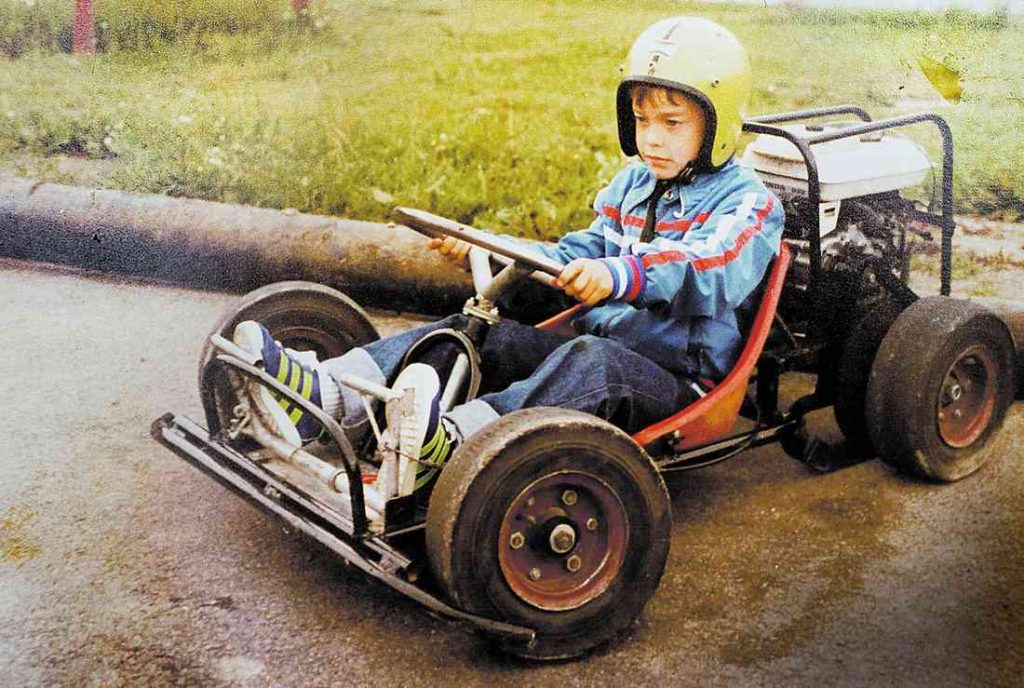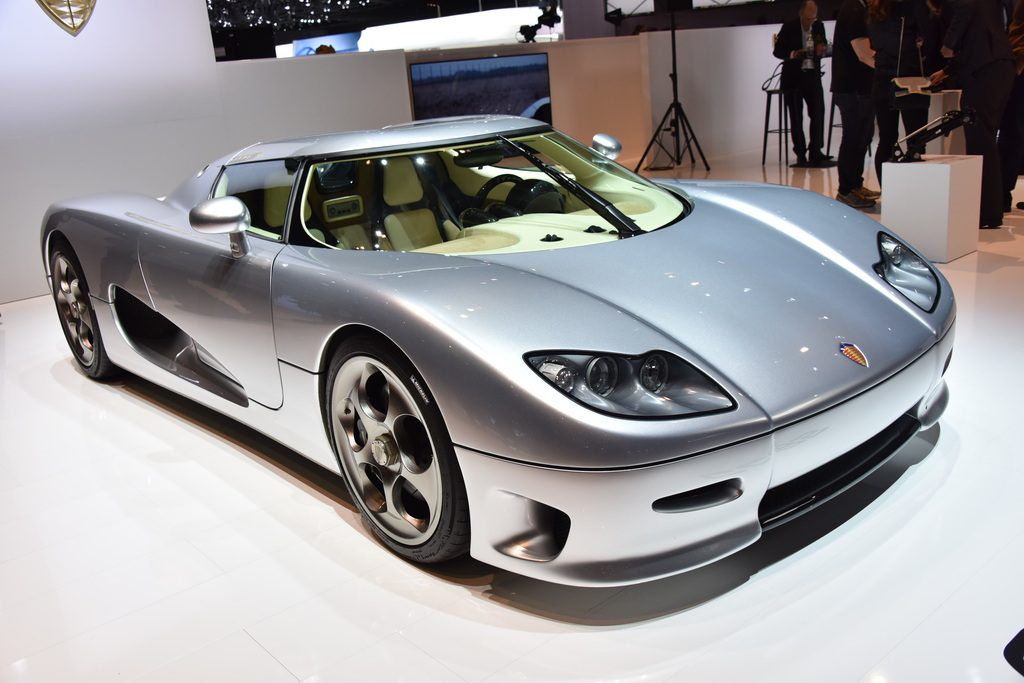← Back
Christian von Koenigsegg, Entrepreneur
Interview, 1 November 2017
Muhammad Ali once said: “Impossible is not a declaration. It’s a dare”.
This has always been the attitude of Christian von Koenigsegg, the physics enthusiast who builds some of the world’s most powerful supercars out of an old air base hangar in the southern Swedish seaside town of Ängelholm.
As a 6-year-old, Christian von Koenigsegg was taken to a go-kart race track – and the experience would come to change his life forever.
13 years later and with the long-term ambition of building his own supercar, von Koenigsegg launched a trading company to raise funds for his project, one which most people said would be impossible.
Having earned a bit of money peddling frozen chicken and misprinted plastic bags for two years, the 22-year-old entrepreneur launched his car manufacturing firm under his own name in 1994.
At the time, Sweden was coming out of an economic recession and von Koenigsegg entered a market filled with established competitors but without a clear idea of when he would have an actual product to offer his customers.
The ensuing years tested the patience of everyone involved, as bills were piling up and production and testing continued without any revenue coming in.
It wasn’t until 2002 that Koenigsegg launched its very first car, the CC8S. The same year it was deemed the most powerful production car in the world by The Guinness Book of World Records.
Since then, Koenigsegg has established itself as one of the most sought-after supercars in the world, selling to a narrow clientele of wealthy enthusiasts willing to fork up around 2 million dollars for a car of their own. All of which are handmade in the Koenigsegg factory outside of Ängelholm, where Christian von Koenigsegg leads a team of around 150 employees and is personally involved in every step of the process.
What enables a young man to go for his childhood dream, defying all odds and naysayers, and succeeding in building a company that by all laws of business physics shouldn’t even exist, much less be world leading in its field?
We caught up with the Koenigsegg founder to find out what lies ahead for the company, what going through tough times did to his character and what a builder of supercars does to wind down after a long day at the factory.
I heard your life changed as a 6-year-old when you drove a go-kart for the first time, in what way did that experience shape you?
– I remember being quite scared to go there actually. I was there with friends and after driving it I felt like it was the best experience of my life and I couldn’t think of anything else for weeks after. Being on that racetrack got me thinking about cars and what they can do.

What separated you from other kids growing up?
– In many ways not so much maybe, but I really liked the technical aspects of things and that meant taking things apart and putting them back together again, to get a sense of the inner workings of things. My parents were very patient when I opened up the VCR or the TV set. I don’t know if it was unusual or not but I really dug into stuff with great technical enthusiasm, making things better or worse, depending on what day it was.
You launched Koenigsegg as early as 1994, what prompted you to take the leap and go for it?
– It had been my dream to build my own cars ever since I saw a Norwegian stop motion movie called “Pinch Clip Grand Prix”, also around the age of six. I remember coming out of the cinema and telling my father that I was going to be that bicycle repairman building incredible cars when I grew up. That dream stuck with me and I started reading every car magazine and drawing cars on my Commodore 64 and later on my Amiga. I started my own company at 19 to make some money trading odd stuff like frozen chicken and misprinted plastic bags, and three years later I got going and started drawing on my first prototype, and this was in 1994.
What were the years between 1994 and 2002 like, a period where you were struggling financially and had no product to offer customers yet?
– In
“No matter what it takes, and regardless if there is any light at the end of the tunnel, you need to keep on walking where other people might have stopped. That is what will make the difference.”

That period must have taught you some very valuable lessons, how crucial do you think it is to experience that sort of struggle as an entrepreneur?
– It’s definitely helpful but it depends on what you are doing. If you take a franchise for
You are very hands on in the process of manufacturing the cars, are there times when you must force yourself to take a step back?
– Most definitely. In order for our company to grow, that is very important. At the same time, we are a small organization with about 150-160 employees doing big company stuff. Everyone including myself must meddle with so many things and wear so many hats.

“Everyone has to check everyone else from time to time and give advice and help out, otherwise it doesn’t work.”
You have a closely-knit team that works in your factory in southern Sweden; what makes a great leader in your opinion?
– I guess there are many different types of leaders and we have some amazing leaders here at Koenigsegg who get their teams into the right spirit and push the envelope. As for myself, I don’t know if I would call myself a great leader necessarily. I am probably more of an inspiring persona who runs fast in the direction I want to go and pave the way and help out, more than being a strategical leader in the conventional sense.
Would you ascribe your work ethic to your passion for building cars or was discipline ingrained in you from your parents?
– A little bit of both but perhaps more from the first. Already in the early stages of building
You strike me as very interested and well versed in physics; is there a chance that you would have become a scientist if you hadn’t built cars?
– I always loved physics but never studied it, apart from when I was in high school. I loved to think about and explore physics and have always thought about stuff from a physical perspective. When we design our cars, the process is always so multi complex and extreme and physics always plays a major part in it. As we strive to build the strongest and fastest engines running on normal fuel, and try to break new ground, we always battle with physics and are forced to apply it in our daily work. But I also love to think about the universe and how things work in my daily life although I rarely get the opportunity to interact with other, real physicists, so it’s mostly just my own thoughts.


Where do you turn to for relaxation?
– Basic stuff. I live only seven minutes away from the factory with my family and our house is located in a small fishing village by the sea and there is a beach and a small harbor there. Walking the dogs on the beach or hanging out with our kids watching movies or doing puzzles, that’s about it I guess. Not very complicated at all, haha.
Where do you envision Koenigsegg as a company will be 10 years from now?
– Tough one… I never say that we will have this amount of turnover or this number of cars sold, but I expect us to have moved forward technically and continue to make inspiring and exciting products. Most likely sports cars or perhaps a spin-off of what we do now. I also hope that we will have grown a little bit, because there are only two natural states for a company and that is either growing or shrinking. And I’d rather grow than shrink.
But it all depends on external factors. I remember in 2008 when the world recession hit, and the US, which was our biggest market at the time, completely shut down from one day to another. Luckily for us, Asia and specifically China was growing and compensated for the loss. But you never know and can never rely on external factors so we’ll go with the flow I guess…
For more, please visit:
www.koenigsegg.com